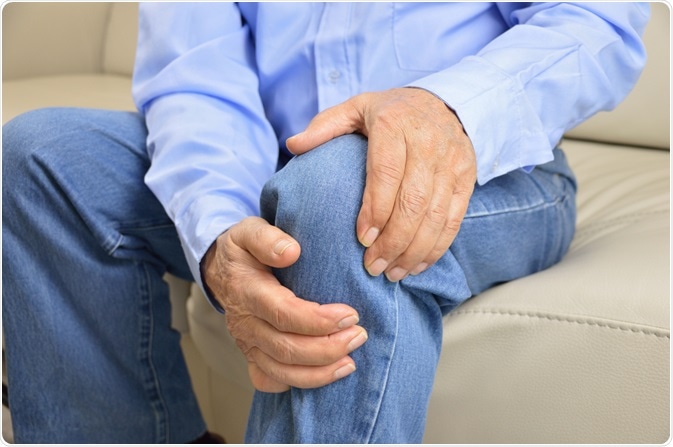The ability to recognize the signs and symptoms of osteoarthritis is important to make an accurate diagnosis of the condition. Usually, individuals who present to a clinician with indicative symptoms of osteoarthritis will provide a detailed medical history, which is followed by confirmation of the diagnosis that is achieved with X-ray imaging.
Osteoarthritis, Causes, Signs and Symptoms, Diagnosis and Treatment.
Affected areas
Any joint in the body may be affected by symptoms of osteoarthritis, although the most commonly affected areas include:
- Hands
- Feet
- Spine
- Hips
- Knees
Pain
The primary symptom that is present in the vast majority of osteoarthritis cases is pain. Osteoarthritic pain is usually described as a sharp ache or burning sensation in the joints that may also involve the muscles and tendons.
It is common for the pain to worsen significantly in cold temperatures or in high humidity areas. Additionally, some individuals report more severe symptoms after a drop in barometric pressure. Although medical literature to support this is not strong, it is a common observation in practice.
The pain experienced by individuals as a result of osteoarthritis can be severe and often leads to swelling, stiffness, and loss of ability, particularly for activities that involve substantial use of the joints. As a result, quality of life can be inhibited significantly.
Treatment is often needed to help people who suffer from the condition to manage their pain. In fact, pain is the primary concern for many individuals and simple analgesic relief is sufficient to help some people improve their quality of life.
Swelling and stiffness
As the condition progresses, the affected joints usually appear larger than normal, which is mainly a result of associated swelling. Additionally, the joints may become considerably stiff, which can inhibit individuals from using their bodies as usual.
This is particularly evident in smaller joints, such as those in the fingers. Hard bony enlargements, known as Heberden's nodes (on distal joints) or Bouchard’s nodes (on proximal joints) may form. These inhibit movement of the fingers and the ability of the hands significantly, although they may or may not be associated with pain.
In the toes, it is common for bunions to form, which involves reddening and swelling of the joints. It is not uncommon for people to also notice physical changes to their joints before any pain becomes evident.

Image Credit: cunaplus / Shutterstock.com
Loss of ability
The changes in the joints can have a significant impact on the ability of individuals to partake in their daily activities as normal.
Many people find this difficult, as they are no longer able to cope with everyday activities that they have always been able to do. Particularly when the hands are affected, even simple tasks that require fine movements can become very challenging.
Other characteristics
Using the affected joints during gentle exercise and activities often helps to lessen the pain and make that area feel better. However, with excessive or prolonged use, the symptoms usually become worse. This is a distinguishing factor from rheumatoid arthritis, which is instead associated with an improvement of symptoms after using the affected joints.
In some people, a certain crackling noise called crepitus may occur when the joint is moved or touched. In addition, occasionally people present with muscle spasms and contractions in the tendons of affected areas, as well as filling of the joints with fluid.
Further Reading
Last Updated: Apr 27, 2021